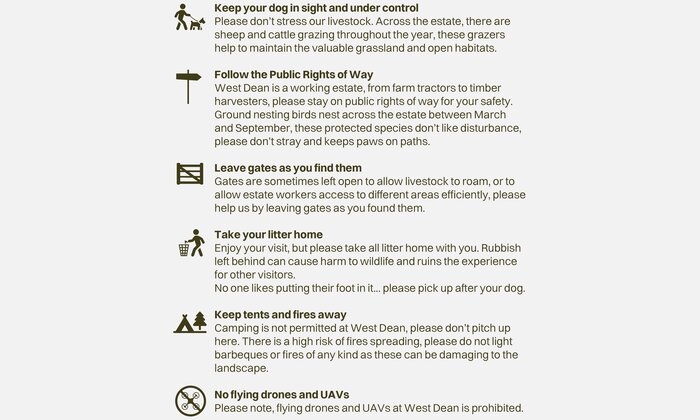All of the heating and hot water needs of West Dean College (and parts of the village) are met entirely and on a sustained basis by the wood fuel grown on the West Dean Estate. The biomass district heating scheme was one of the first and remains one of the largest of its kind in the UK.
Demand at the College for heating and domestic hot water is high, around 2.5 million kilowatt hours per year. In the early 1970s, when the College was being developed, the heating came from 50 year old coke-fired boilers which had been converted to oil in the late 1950's. These were extremely wasteful, operating at about 40-45% efficiency. Periodic flooding in the boiler house from ground water was also potentially hazardous, the boiler being located within the house complex. By the late 1970s electric night storage heaters had to make up the heating deficit and it soon became clear that this highly inefficient system would not cope with the increasing demands of student accommodation and the growth of the College.
The Trustees commissioned a survey into new heating systems and all forms of fuel were considered. Wood fuel appeared to be the most viable possible alternative. It was estimated that to heat and provide domestic hot water for West Dean College would need approximately 1,000 tonnes of wood fuel per annum, and a study confirmed that this annual yield could be sustained. The Estate has 2,000 acres of woodland.
Advantages of using wood as a fuel source
Wood is a renewable and sustainable source of energy. Trees grow using the energy of the sun to fix carbon from the atmosphere. The woods have a sustainable yield of timber which can be harvested indefinitely without depleting the resource in any way.
- It is virtually carbon-neutral
- It is a clean and safe fuel
- It benefits woodland management
- It benefits the local economy
The plant processes 1,200 tonnes of chips per year. The chipyard can be used to store nearly two months' supply of fuel wood should this be required, although the current practice is to have a year's supply stacked, drying naturally, in strategic locations throughout the Estate.
The underground mains feed not only the College, five large student residences, 6,000 square feet of new teaching and exhibition space, but also the glasshouses in the walled Kitchen Garden, nine Estate houses, the Gardens Visitor Centre, an outdoor swimming pool, and even the village church, said to be the warmest church in the south of England!
After 27 years of successful operation, the Foundation has replaced one of the two biomass boilers with a modern state-of-the-art boiler having an output capacity of 1,200 kilowatts and an efficiency rating of 92%. The Department of Energy and Climate Change provided a valuable grant towards the capital works.
Edward James died only three years after the wood-fuelled district heating scheme was commissioned, but the project echoes the spirit of the man and his far-sighted vision; an ecologically sound and sustainable concept, contributing to the caring stewardship of his beloved woods and trees, and a thoughtful use of the Estate's natural resources.













